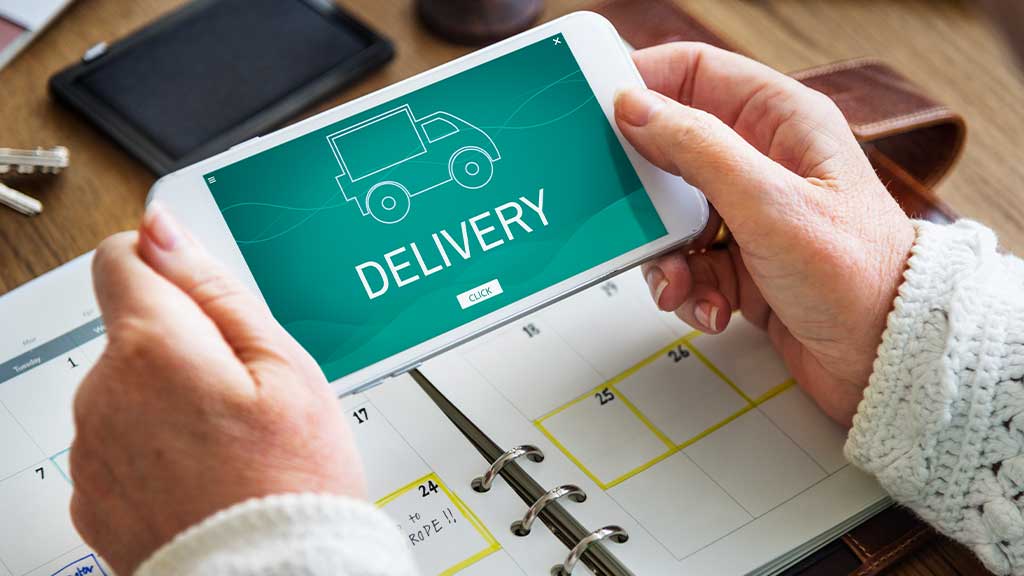6 min. read




Differences Between Shipped vs. Out for Delivery – Complete Guide
You placed an order online for the first time and you receive an email the next morning stating that the order is “Out for Delivery”. Don’t know what it means? Find it difficult to understand the delivery terms used by the sellers? This blog will come to your rescue. If you don’t understand the difference between shipped vs out for delivery, then here is everything you need to learn about these standard shipping terminologies. Read more to learn further.
What does it mean when it says your order is “shipped”?
Although you might think your order ships as soon as you place it, that isn’t always the case. Then what does “shipped” mean? For online orders, shipping is typically the final phase in the supply chain process. Orders placed online go through numerous processes before being sent. Once a business receives an order confirmation, they start working on it right away. In other words, they package and label the items you purchased. They will also start creating the product you have ordered if it hasn’t been made yet during this procedure.
When your order is ready to be delivered, the seller sends it to a delivery service such as FedEx, DHL, or USPS. However, in certain situations, if the seller has their delivery service—like Amazon does with Amazon Logistics—they may manage it on their own. Shipping begins as soon as the package leaves the seller’s warehouse. Transporting a package from its original destination—the seller’s location—to your destination is known as shipping.
Factors affecting shipping
Various factors affect how long a shipment would take to deliver. The shipping option you choose, how far the vendor is from you, where you reside, the climate, what’s enclosed in the box, and the size of the packaging all affect the delivery of the shipment. Additionally, the types of packaging used play a crucial role in ensuring the safety and speed of your delivery, as certain packaging may require special handling or influence delivery times.
Standard shipping can take about two to eight days while priority or expedited shipping gets delivered within one to three days. However, you must remember that expedited shipment is more expensive. The time it takes for the package to reach you can vary depending on how it is transported. For instance, it will most likely arrive sooner by air shipment than by ground shipment. It will take longer if the package is arriving from a different country as it needs to pass through customs and other procedures.

The steps necessary to ship an order
The multi-step shipping process begins as soon as your order is confirmed. After that, the supplier starts processing your order, which includes labeling and packing your item. The order processing step includes the production procedure if the product hasn’t been manufactured yet.
Once the order is ready and packed, it is sent via the supplier’s courier service or given to a delivery service. When the box departs the supplier’s warehouse and sets out for its final destination, which is the address you provided, the shipping procedure officially commences.
Is shipping the same as delivery?
Since the terms are believed to be equivalent, they can appear similar to you. But they aren’t. For instance, when you order online, the seller will give you two dates: the delivery date, which indicates when the item will be delivered to you, and the shipment date, which indicates when the item will be shipped from the warehouse.
On the other hand, there is a chance that these terms will also be employed to characterize the type of goods that must be delivered. The term shipping is used to refer to the preparation of your order including packaging and delivery. Conversely, “delivery” describes moving relatively big things, including furniture and electronics, from a warehouse to a customer’s address.
What does it mean when the status says that your product is “out for delivery”?

You need to learn out for delivery meaning to understand when you will receive the product you ordered. When you receive an email specifying that your order is “out for delivery”, it implies that the package will be delivered to you by a delivery executive. A package that is labeled “out for delivery” means that it has left the previous pickup location and is on its way to your house. You should therefore anticipate receiving your package later that day or even the next day.
The tracking status will show “in transit” before it changes to “out for delivery.” These don’t mean the same. Packages marked as “in transit” are packages that are traveling between shipping points, usually from a national shipping center to a regional one, or from a regional center to a local delivery location.
What does “out for delivery” mean? This also implies that the delivery truck has left the distribution center and will reach your address when the item is marked as “out for delivery”. When the delivery driver starts putting the goods onto the truck at the shipping facility or distribution center, the shipping process actually begins in an official way. The delivery man will begin his route once the truck is loaded.
The number of stops required may vary based on the delivery area’s size. The driver will take products out of the truck and deliver them to the customer’s door at each stop. The driver will return to the distribution center or USPS sorting center after delivering every item. The same applies to “on the way vs out for delivery”.
Shipping vs. Delivery
The following is a summary of the main distinctions between delivery and shipping:
- Scope: Delivery concentrates on the final mile from a local hub to the customer, whereas shipping covers the full path from the point of origin to an intermediary destination.
- Quantity: Delivery handles individual packages, whereas shipping usually entails bulk shipments.
- Carriers: Local carriers or couriers are used for delivery, while many carriers may be involved in shipping.
- Documentation: While delivery frequently depends on tracking information, shipping necessitates substantial documentation, such as bills of lading and customs forms.
- Liability: In the event of loss or damage during transportation, the shipper or seller bears responsibility; in the event of loss or damage during delivery, the carrier bears responsibility.
In summary
In the fast-paced world of online shopping today, customers expect accurate and timely order updates. Businesses that give customers information about delivery statuses and their implications might help customers feel less frustrated when delays occur and allow them to track deliveries with confidence. This proactive approach not only enhances the overall customer experience but also fortifies the relationship between companies and their clients.
In the end, ensuring a seamless and enjoyable delivery experience requires clear communication on shipment status. Provide clients with the information they need to understand the subtleties of the shipping process, and businesses may alleviate confusion, build trust, and leave a pleasant and long-lasting impression. Maintaining transparency and updating customers on shipment statuses will be essential to building enduring customer loyalty.
FAQs
Here are some common questions and answers about these shipping-related issues. Also, go through our Frequently Asked Questions page for additional insights.
1. What does the term “shipping details” mean?
The term “shipping details” refers to the particulars specified in the purchase order about the contract price, shipment, and delivery of the products.
2. Is shipped equivalent to dispatch?
Shipped and dispatched are comparable, however they differ slightly. Shipped indicates that the package is en route to the carrier facility to be delivered to the consumer, whereas dispatched indicates that the seller has packed and given the product to the delivery service.
3. What does an order shipped mean as opposed to delivered?
Whenever a shipment status reads “order shipped”, it implies that the package has left the seller or a warehouse. It is on the way to the buyer. The status “order delivered” implies that the package has reached its designated location and has been accepted by the customer at the delivery address shared while placing an order.
4. Will a shipment that is scheduled for delivery arrive today?
When a package has the marking “out for delivery,” it usually gets to the recipient’s address the same day. However, delays can occasionally be caused by unanticipated events like traffic, bad weather, or a high volume of deliveries.
5. When will my order arrive once it has been shipped?
The chosen shipping method and destination determine how long it will take for a dispatched order to arrive. Typically, if you select an expedited shipping option, you may anticipate delivery either the same day or the next day. On the other hand, your order can take two to eight days to reach its location if you select regular shipping.
6. What is the difference between delivered and shipped?
If the order status shows that it has been shipped, it implies that the product has left the seller’s warehouse. On the other hand, the status “delivered” implies that the parcel has reached the person who ordered it.
